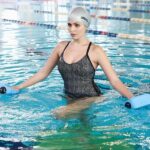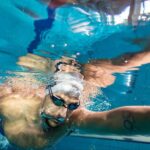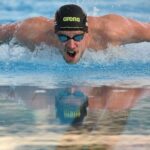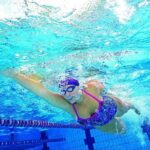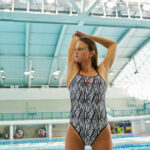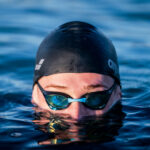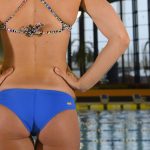3 tips to make your freestyle even more efficient
In this article, we would like to give you three more tips to make your freestyle even more efficient, also suggesting some special drills to improve your arm stroke.
In several previous articles, we have already looked at how to develop your arm stroke and make it more efficient. Thanks to these articles you have learned how to make the best possible use of the various swimming aids Arena has to offer, such as its snorkel, hand paddles and fins.
In this article, we would like to give you three more tips to make your freestyle even more efficient, also suggesting some special drills to improve your arm stroke.
Tip number 1: how to improve your forward propulsion. For the freestyle, and also the backstroke, an excellent drill for learning the proper arm movement is the one-arm-only technique. This drill allows you to focus on each individual phase of the arm stroke, particularly the pull.
The drill can be performed in two ways: with your arm immobile extended out in front of you or with your arm immobile along your side. In the first case, you can concentrate better on your head rotation and the catch and pull phase. In the second case, you will increase your body rotation during the arm stroke.
- Recommended set: 12 x 25 m changing arm every 3 x 25 m with 20 seconds’ recovery. You can also try working with hand paddles. My advice is to begin using Arena’s Elite Finger Paddles that give you better control over your technique. Then, if you want to work more on developing your strength, you can start using Elite Hand Paddles.
Tip number 2: use a pullbuoy, but with moderation. The pullbuoy is a perfect aid for learning the proper swim stroke, but, as with all things, if you overdo it, it can be counter-productive. It can lead to overcompensating with your chest rotation and prevent you from using your legs, already a weak point of most swimmers.
A drill you can try to improve your body position and the forward drive phase involves placing the pullbuoy between your knees and imagining you have to keep your chest inside an imaginary rectangle. The aim is to keep your body properly aligned, eliminating any excessive sideways movement and making your arm stroke more symmetrical and efficient, particularly during the final thrust.
- Recommended set: 8 x 50 m with a pullbuoy, altering your breathing. 1 x 50 m breathing every three strokes, 1 x 50 m breathing every five strokes. 20 seconds’ recovery. Of course, you can increase the number of reps when your arm stroke becomes more efficient.
Tip number 3: you decide which arm stroke to use. Sometimes people are overly anxious to develop a perfect arm stroke. Should your arm be straight during the recovery phase or bent at the elbow? There is no right answer to that. Let’s just say that your arm stroke will choose you. If you work on your speed, you will tend to swim with straight arms but, as the distance increases, you will almost certainly opt for a bent elbow recovery.
To see the difference between the two types of arm stroke you can “play” at counting the number of strokes, focusing on the length of your stroke. Or you can try swimming with a smaller surface area pulling against the water, for example by swimming with clenched fists. This will let you swim with straight arms.
- Recommended set. For the first drill, try 50 m sets, attempting to reduce the number of arm strokes every 50 m. For the second drill, we suggest 25 m sets swum flat out, also using Arena Powerfins.
Written by:
arena coaches
Swim coaches, trainers and experts will give you all kinds of tips for performing at your best in both training and races.
